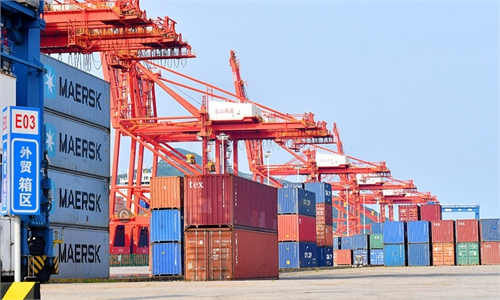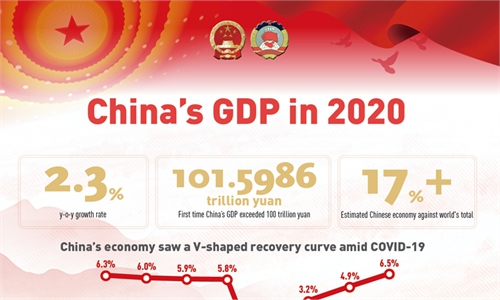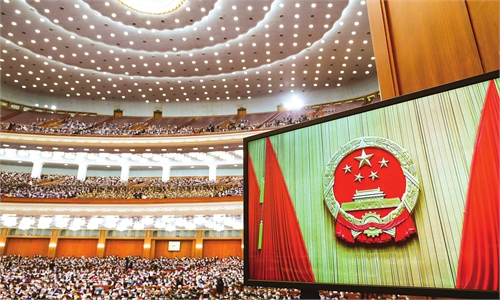China projects confidence with over 6% GDP growth target, mild military budget boost
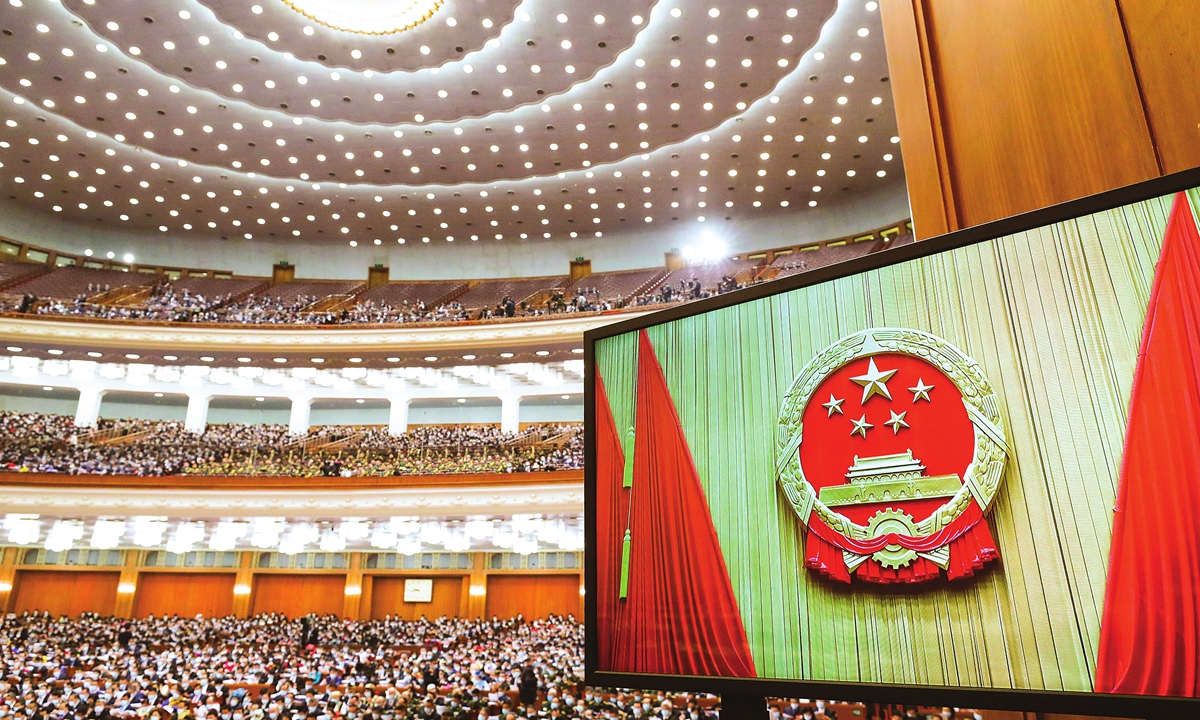
The fourth session of the 13th National People’s Congress (NPC) opens at the Great Hall of the People in Beijing on Friday. Photo: Xinhua
While the world is mostly still under the thick cloud of the COVID-19 pandemic, China on Friday convened its annual legislative session, one of the biggest in the world, and released a flurry of sweeping plans and goals, including an over 6 percent GDP growth target for 2021 and a hiked 6.8 increase in its military spending, putting on full display its resilience and confidence in advancing all areas, from the economy to livelihood and national defense.
China's return to a decades-old tradition of setting numeric economic growth targets, after skipping it for the first time in 2020, its ability to balance various priorities to ensure robust economic development and national security as well as its ambitious and yet specific long-term development plans also projected steadiness and a sense of certainty to a world rattled by the pandemic, analysts noted.
Still, a relatively conservative growth target for 2021 and a slight increase in defense budget also underscored the lingering formidable tasks ahead, including eliminating the coronavirus, improving the quality and sustainability of the economy and responding to rising geopolitical tensions in a wide range of areas from the Taiwan Straits, to the South China Sea and the border with India.
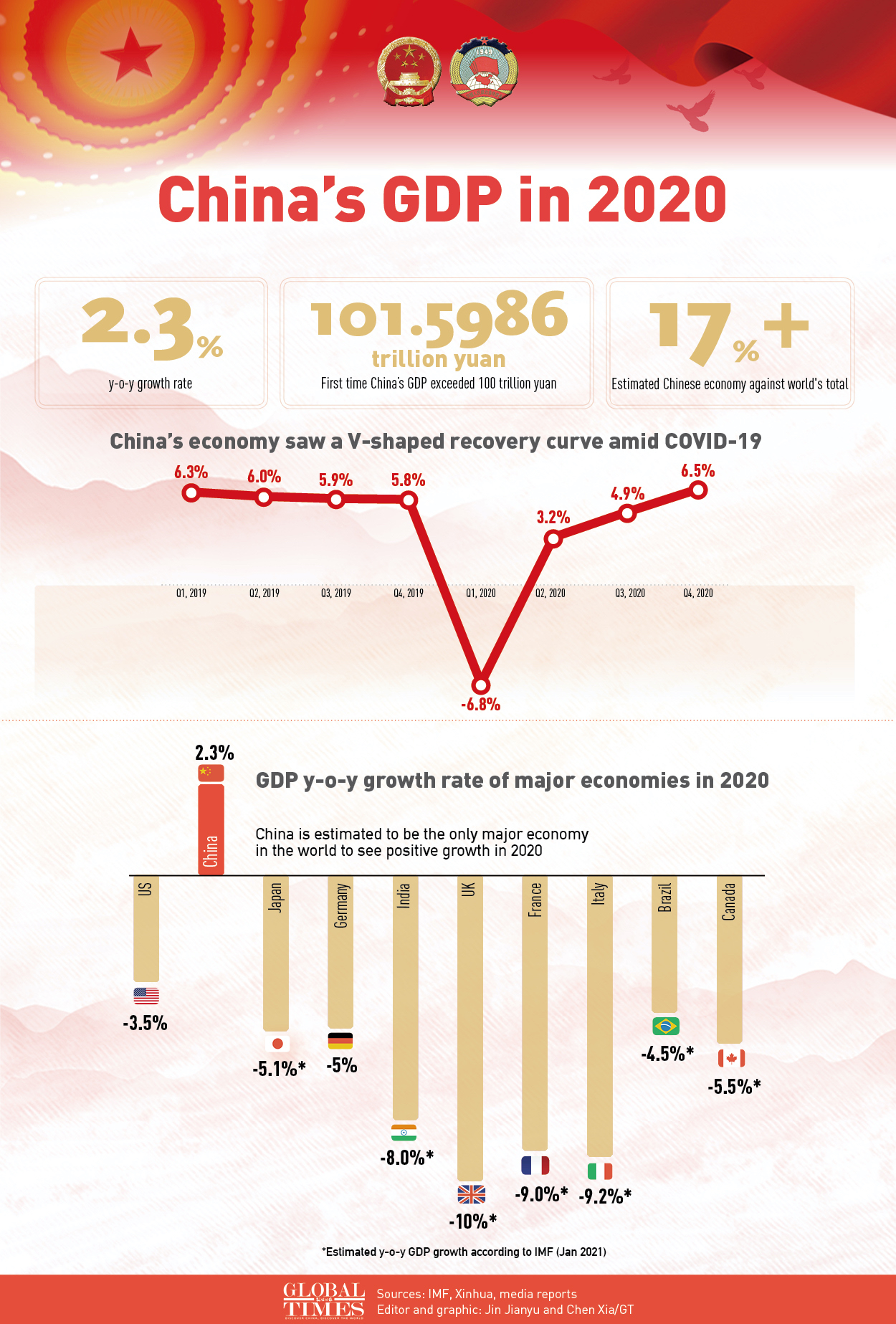
China's GDP in 2020. Graphic: GT
Show of confidence
In the Government Work Report delivered by Premier Li Keqiang at the opening of the annual session of the National People's Congress (NPC), the country's top legislature, China's GDP growth target has been set at over 6 percent for 2021, defying market expectations that a specific numeric target may not be set after China decided not to release one for the first time in decades last year due to COVID-19.
"In setting this target, we have taken into account the recovery of economic activity. A target of over 6 percent will enable all of us to devote full energy to promoting reform, innovation, and high-quality development," Li told 2,900 NPC deputies from across the country who gathered inside the Great Hall of the People in downtown Beijing.
The NPC session is held almost simultaneously with the annual meeting of the Chinese People's Political Consultative Conference (CPPCC) National Committee, the top political advisory body, which has over 2,100 members. Collectively known as the two sessions, a key event in the country's political calendar, the annual gathering is a window into China's policy priorities.
"The 2021 Government Work Report is realistic, pragmatic, focused and inspiring. Against the backdrop of uncertainty around the world, the report conveys certainty and boosts confidence and morale," Zhang Jindong, an NPC deputy and chairman of e-commerce giant Suning Holdings Group, told the Global Times on Friday after listening to the report.
Even the bottom end of the target means that growth would rebound sharply from last year's 2.3 percent and return to pre-pandemic levels of around 6.1 percent. It would also put China in the leading position among major economies around the world in the recovery process.
The IMF projects the global economy will grow by 5.5 percent in 2021, with developed economies expected to grow by 4.3 percent.
Also underscoring China's confidence was a decision to increase its 2021 defense budget by 6.8 percent to 1.35 trillion yuan ($209 billion), a quicker pace than the 6.6 percent in 2020 and largely in line with the targeted growth rate of the economy.
Analysts said that the increase is reasonable and in line with the external threats it faces, including rising aggression from the US in the South China Sea and the Taiwan Straits and from India on the border.
In another move that few countries are able to achieve at such uncertain times, China also released an ambitious plan for the next 5-15 years, when it wants to become a modern socialist power with a greener, sustainable and innovation-driven Chinese economy.
Under the 14th Five-Year Plan and Long-Range Objectives through 2035, GDP growth would be maintained at a "reasonable range," which some analysts say could mean an average annual growth of between 4.7 percent and 5 percent in the next 15 years. In keeping with the green and innovation-driven growth target, China would aim for a 7 percent annual growth in research and development spending during the period, a 13.5 percent drop in energy consumption per unit of GDP and an 18 percent cut in carbon dioxide emissions per unit of GDP.
Given China's role as the main global growth driver, "[the target] also boosts global confidence and offers very concrete reassurance for the post-pandemic global economic recovery," Wei Jianguo, former Chinese vice minister of commerce and executive deputy director of the China Center for International Economic Exchanges, told the Global Times on Friday, adding a robust and rapidly-opening Chinese economy would contribute more to the global economy.
Wei said that the 30-page report was very concise in length but also highly detailed in terms of policy plans, with a heavy focus on high-quality growth as well as people's livelihoods.
The report also set a slew of other targets that are directly linked to people's livelihood, including creating 11 million new urban jobs in 2021 compared to 9 million in 2020 and keeping consumer price increases at 3 percent this year, compared to 3.5 percent in the previous year.
Ensuring living conditions and food supply, the report also aims to cut energy consumption per unit of GDP by around 3 percent this year and reach a grain output of over 650 million metric tons.
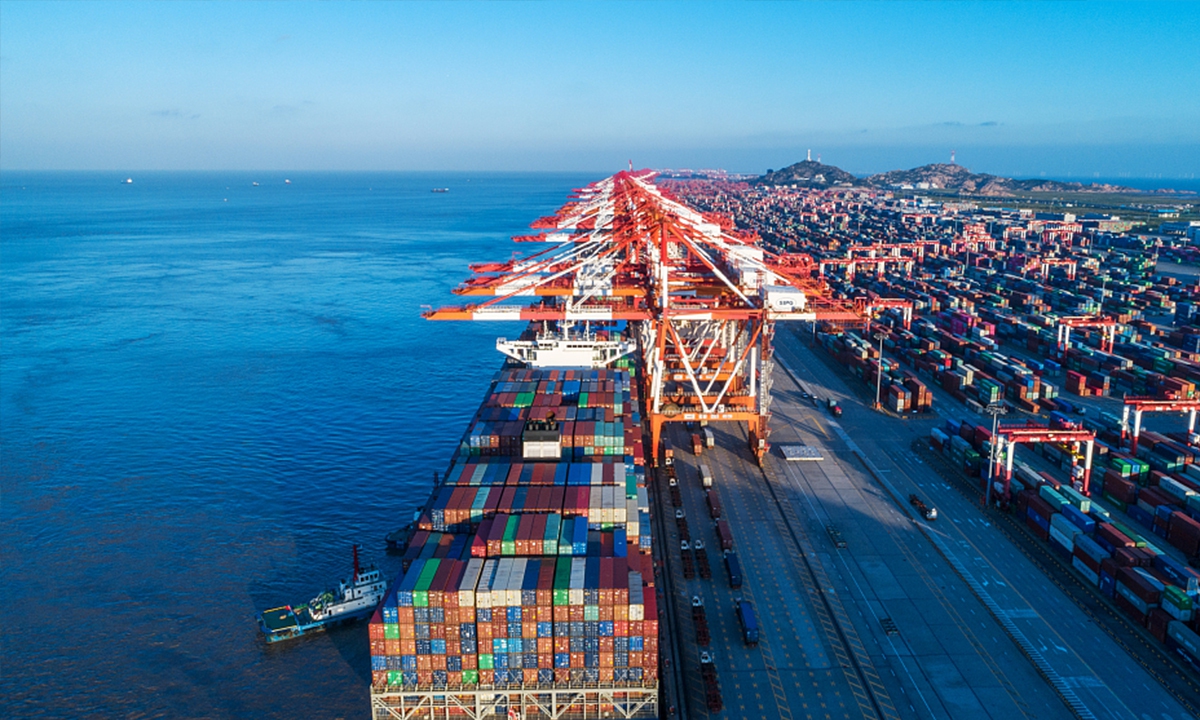
GDP Photo: VCG
'Formidable' tasks
However, even though expectations and confidence are running high, Li said that there are formidable tasks ahead for China in a wide range of areas, including defusing risks in the financial sector and other areas, protecting the environment, as well as addressing weaknesses in areas important to people's needs.
This view was also reflected in the setting of various targets, particularly the growth target for 2021, which is well below a widely-accepted forecast of over 8 percent for the year.
"The target is very moderate compared to the high market expectations," Tian Yun, vice director of the Beijing Economic Operation Association and former economist at the state economic planning agency, told the Global Times, noting that the lower target may be aimed at leaving sufficient room in fiscal and monetary policies to address risks such as debt and financial risks.
In line with that view, the report said that China has set its deficit-to-GDP ratio at around 3.2 percent compared to 3.6 percent in 2020. Also, there will be no special bonds for COVID-19 issued this year, it said.
The report also said prudent monetary policy will be "flexible" and quality, efficiency and sustainability of proactive fiscal policy will be "enhanced."
Sun Guojun, an official at the State Council Research Office and member of the drafting team of the report, said at a press briefing on Friday that the over 6 percent target is based on many factors, including the current economic recovery process, low base numbers as well as the need to maintain "sustained and sound development," while avoiding abruptly high or low annual goals.
In addition to economic risks, there are other challenges including the need to maintain anti-epidemic measures against COVID-19.
"China will continue to face many development risks and challenges, but the economic fundamentals that will sustain long-term growth remain unchanged. We should stay confident, meet challenges head-on, and consolidate the foundation for economic recovery to ensure sustained and healthy economic and social development.," Li said.





